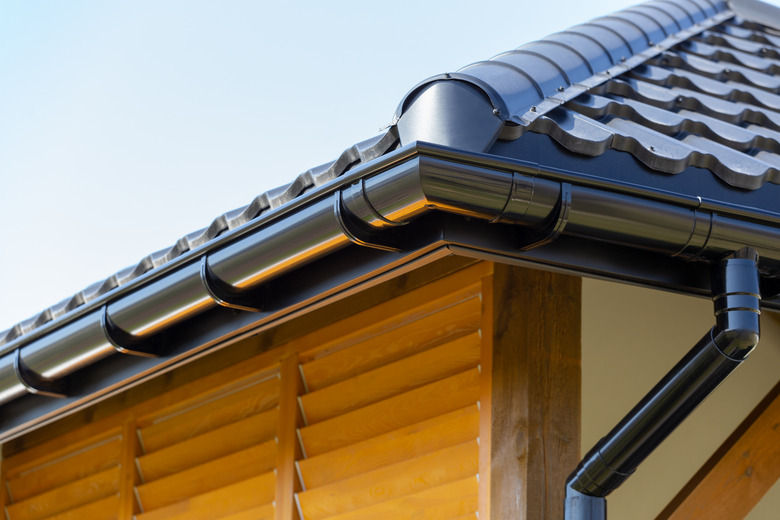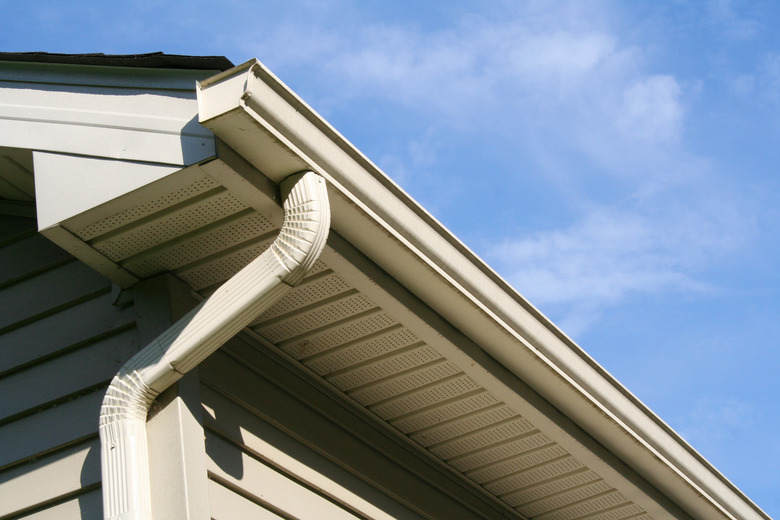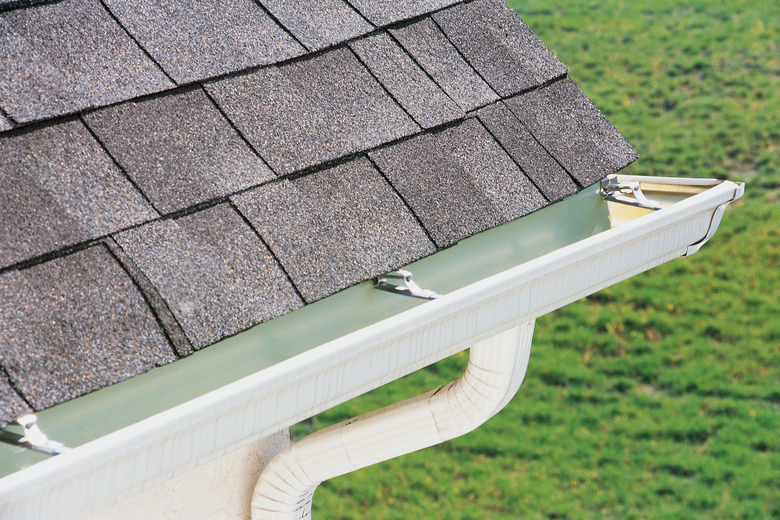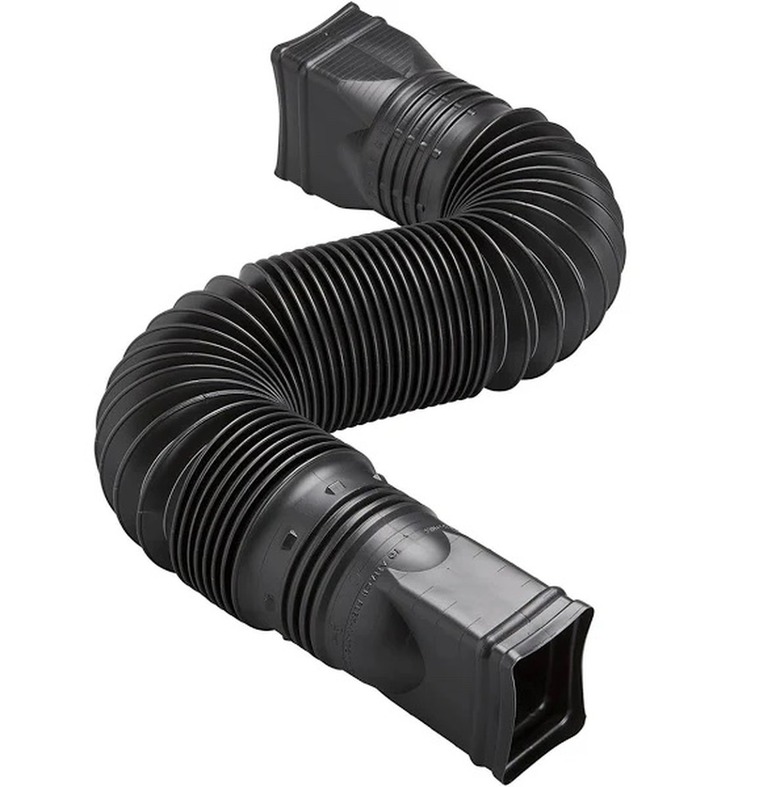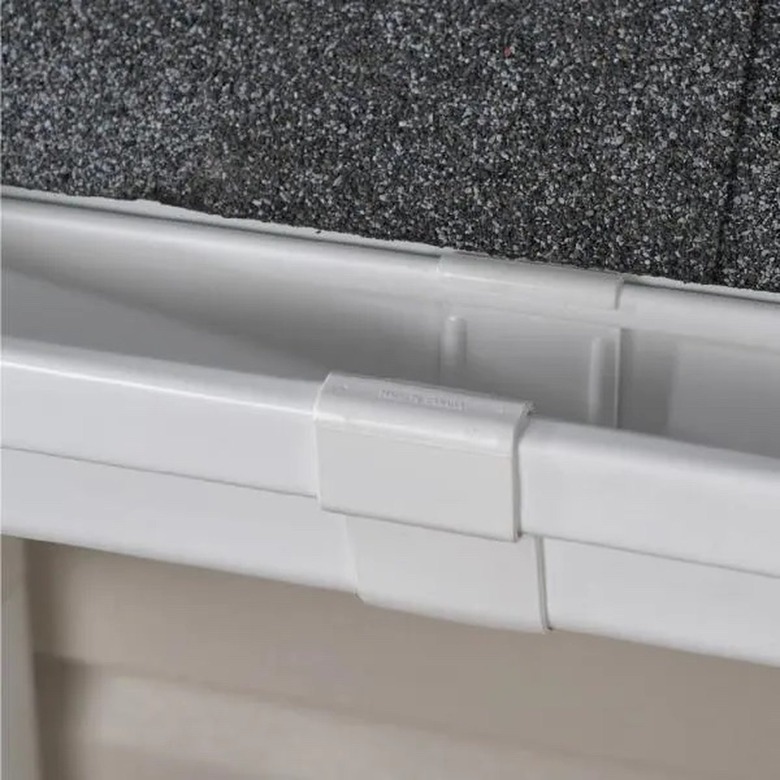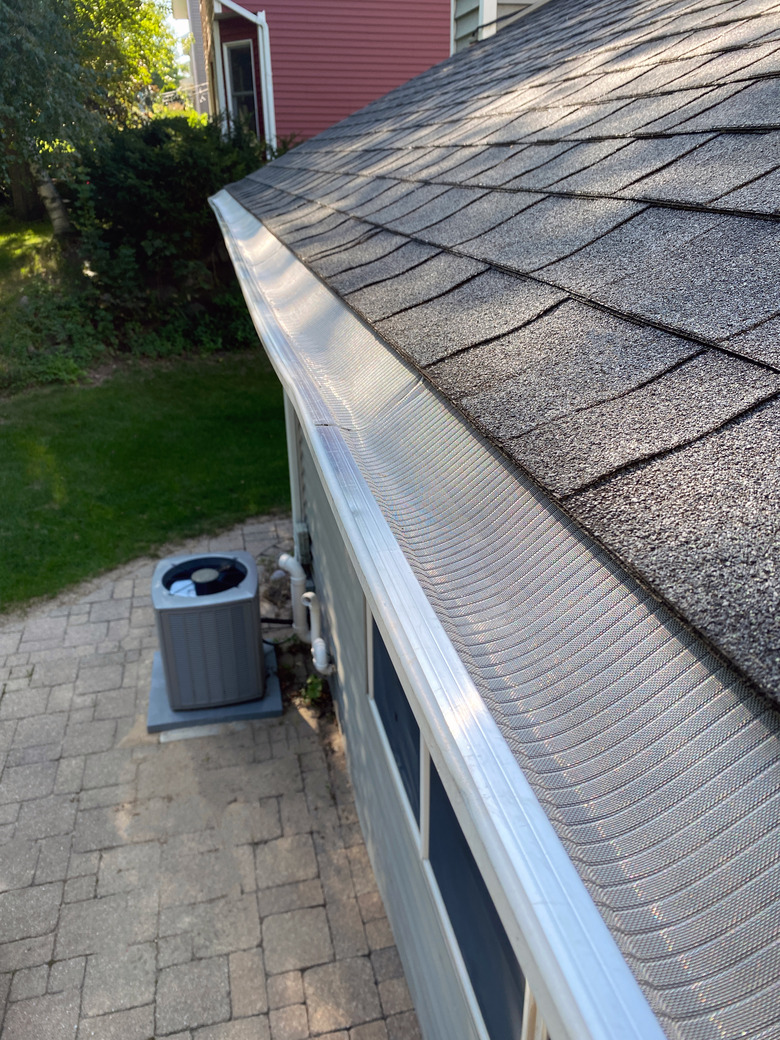The Best Types Of Gutters, Gutter Materials, And Fasteners To Consider For Your Home
We may receive a commission on purchases made from links.
Whether you're choosing gutters for a new home with the builder's guidance or replacing an old system, possibly along with a re-roofing project, you'll do well to learn as much as you can about the best types of gutters, gutter materials, and fasteners on the market today. If you're planning to install your own, you'll need to learn more than that for your project to succeed. There's a lot more to gutters than just quickly tacking up the cheapest troughs you can haul home from the nearest hardware store, so you may want to hang tight, get gutter educated, and call an expert.
Gutters Are Serious Business
Gutters Are Serious Business
A properly functioning rain gutter system is designed to protect your home from water damage by delivering water to downspouts and away from your foundation without the water spilling over the sides of the troughs. In only a few cases do houses not need gutters. A home can get by without gutters only when site conditions are favorable for this, and the roof is designed with sufficient overhang so the water running off the roof does not collect near the foundation or excessively splash the house siding. For houses that do need them, however, new gutters must be sized with the pitch of your roof and its square footage in mind in order to handle the volume of water runoff without splashover. Proper design also helps to prevent gutter clogs.
Even though gutters often look perfectly horizontal and precisely lined up with the fascia (the board on the front of your eave overhang), if they're properly designed, they're anything but perfectly level. If gutters weren't slightly sloped, the water wouldn't travel as it should to the downspouts. For example, a short run of gutter will tip slightly in one direction toward a downspout at the lower end, while a lengthy gutter section has a slight crown midrun, promoting water movement toward a downspout at each end. Proper gutter installation also involves securing each section of the system to prevent sagging that can impede the flow.
Finally, a smooth-functioning gutter system involves clog prevention through routine gutter cleaning. Cleaning tasks can be minimized with properly fitted gutter guards that handle leaves, pine needles, and composite sediment washing off the roof.
If you're like many homeowners, you take all of this for granted, noticing gutters only when they sustain damage and disregarding the crucial role they play in keeping your basement dry and in preventing water damage to your foundation, walls, and ceilings. Gutter manufacturers work to counter gutter neglect by standing ready with outstanding products that perform well and look great — from the gutters themselves to the fasteners that secure them.
The Best Gutter Materials
The Best Gutter Materials
"Best" means different things to different people. If you think a gutter material is the best because it has dazzling visual appeal, you may find yourself willing to cough up big bucks for the snazziest full-copper treatment on the market. If you lean toward what's practical, you'll be talking to your gutter salesperson about nothing more than performance and durability. On the other hand, if you're like many homeowners, you'll think the best gutters are those that come in at the cheapest price. Whichever category you're in, you'll find gutters to make you happy, but you should take a good look around because there's a lot from which to choose, and each material has pros and cons.
Aluminum
While steel has long been the go-to material for most gutters, aluminum is running right on its heels, gaining in popularity because it's easily installed, lightweight, weatherproof, and available in a wide range of colors, with some replicating the looks of zinc and copper. Aluminum is available as both seamless gutters and sectional gutters. The greatest disadvantage of aluminum gutters is their tendency to suffer dents and damage from bending. A heavier-weight aluminum of 0.032 inch is best for durability and offers a life span of approximately 25 years.
Steel
Steel gutters cost more than aluminum, but they're much more durable and carry better warranties. Stainless steel never rusts. Galvanized steel, which is coated in zinc, can go up to 15 years before showing signs of rust, and Galvalume, with a coating of 45 percent zinc and 55 percent aluminum, carries a 25-year warranty. Leaf guards are a necessity for galvanized steel, which can show signs of corrosion much more quickly when damp leaves are allowed to remain in the trough.
Copper and Zinc
Rustproof zinc and copper gutters are often found on high-end homes. They're pricey, but they last. Copper, available in sectional or seamless forms, can last 100 years no matter the climate. The copper weathers into green and brown tones that complement many stone materials. The distinctively gray zinc gutters can last 30 to 50 years. Because zinc experiences significant expansion and contraction in response to changes in temperature, professional installation is necessary.
Vinyl
It's a given that vinyl gutters will appeal to you if you're on a limited budget and hoping to make a DIY project out of your gutters (the sections are easy to cut and simply snap together), but make sure you're aware of the pros and cons of this least-durable gutter material. It won't rust and can be painted, but it tends to fade in bright sunlight. Vinyl is also easily susceptible to movement and damage from heavy snows and rains and can become brittle from exposure to extreme temperatures, even cracking during a hard freeze. In a mild climate, however, your vinyl gutters may last 20 years.
The Different Gutter Styles
The Different Gutter Styles
Rain gutters come in three styles. When looking at types of gutters, take the style of your home into consideration and choose appropriately.
Half-Round Gutters
A half-round gutter is just that — shaped like half of a tube, or a curved trough. Because they were often used on homes built before the early 1960s, half-round gutters have a retro feel now and may be required by city ordinances if you're replacing gutters on a historic home. The curved shape of a half-round gutter prevents them from sitting flat against the fascia board, so they're hung with special and often decorative brackets, and since their shape often results in clogs, leaf guards are usually warranted.
K-Style Gutters
This gutter style (also referred to as an "ogee" gutter) gets its name from its profile, which resembles the letter "K." With its flat back allowing it to rest flush against the fascia board, it's easy to attach and is the most common type of gutter style installed today. Because the front has the look of a strip of crown molding (which typically has a classical ogee profile), K-style gutters create especially strong curb appeal. The more roomy K-style transports more water than other types of gutters, but its sharp interior corners make cleaning difficult.
Custom-Built Fascia Gutters
Just the word "custom" is all you need to see to know that fascia gutters are expensive. They don't come in sections. Each run is made out of one long piece of aluminum, and they require professional installation. Fascia gutters can cost twice as much as other types of gutters. Whereas K-style and half-round gutters can be made out of any of the materials, including aluminum, custom fascia gutters are only made from aluminum.
The Lowdown on Downspouts
The Lowdown on Downspouts
When it's time to choose downspouts for your gutter system, you'll simply want to choose what matches the rest of the system. Downspout materials for higher-quality guttering systems include steel, aluminum, and copper, but vinyl is also available. Styles available include rectangular smooth, rectangular corrugated, round, and round corrugated. For those with an eye on a very high-end product, there are custom copper gooseneck or copper spiral downspouts that are fastened with rectangular, ornamental copper downspout bands or round copper brackets.
As an alternative to ordinary downspouts, some homeowners are opting for decorative but functional rain chains to create a water feature pathway by which water can fall from gutters into a drain or drainage area on the ground. Often crafted from copper or from steel with a copper-look finish, rain chains come in a variety of styles, such as a simple link style; a style incorporating themed elements, like hearts and watering cans; or a cup style with each cup catching the falling water before it overflows like a fountain into the next cup. Additionally, they don't clog, and they make pleasing sound effects during a rain. Rain chains should be staked to the ground to avoid blowing in the wind and can run into a copper rain barrel or special rain-chain receptacle if you wish to harvest rainwater for use.
The Best Gutter Hangers
The Best Gutter Hangers
Most gutters are mounted to the fascia. Hangers are sometimes chosen based on how they look — or how they don't look if they're hidden — but the most important consideration is whether the hanger will hold the gutter securely so the system can do its job effectively. There are three basic types of gutter fasteners from which to choose: hidden hangers, spikes and ferrules, and brackets.
Brackets are normally used for half-round gutters. They're often decorative and wrap around beneath the gutter, offering excellent support. Hidden gutter hangers are fastened to the fascia board from inside the gutter using long screws. The screws hold well, and the hidden brackets make for a clean look. Spike and ferrule fasteners are the traditional standard. They include a large, nail-like spike that is driven through the front of the gutter and then through a metal cylinder called a ferrule, which sits inside the gutter. The spike then passes through the back of the gutter and sinks into the fascia just like a big nail. Because nails can lose their grip in wood over time, spike and ferrule fasteners often come loose and can damage the fascia.
When used with metal gutters, which expand and contract in response to weather changes, hidden hangers don't pull away from their attachment as spikes and ferrules can. Most guttering professionals consider hidden hangers to be the best choice for standard K-style gutters.
Types of Gutter Guards
Types of Gutter Guards
Ads for gutter guards seem to be everywhere, and trying to understand the differences among them and which are best can be difficult. Here's a rundown of the basic types along with their pros and cons.
References
- USI: Trends in Rainwater Management — How Builders Use and Install Gutters
- Erie Insurance: 5 Common Problems Caused by Clogged Gutters
- Sunvek: Does Your Roof Actually Need Gutters?
- Happy Gardens: 5 Reasons Homeowners Are Choosing Rain Chains Over Gutter Downspouts
- Gutter Supply: Wide Spiral Copper Decorative Downspouts
- Gutter Supply: Gutter Downspouts
- The Brothers That Just Do Gutters: Spiked Gutter System vs. Hidden Hanger System
- Bob Vila: Types of Gutters to Consider for Your Home
- Bob Vila: The Best Gutter Guards of 2021
Screen
Screen guards are made like grids that keep leaves from getting into the gutter. They're inexpensive and easy to install without tools by slipping them under the edge of the first row of shingles. The weight of the shingles keeps them in place, but prying up the shingles can possibly void your roof warranty. The other downside is that screen guards can be blown away by strong winds.
Mesh
These are much like screen guards with smaller holes that block more debris. They too can be installed by slipping them under the shingles or by snapping them onto the top of the gutter. You can also fasten them to the fascia board. Even though mesh guards cost more than screen guards, they can also be damaged or dislodged by high winds and extreme weather.
Micromesh
These are similar to mesh guards, but their holes are smaller and are good at keeping out even smaller debris. They cost more than screens or mesh and require professional installation.
Reverse Curve
Reverse-curve gutter guards have the appearance of a solid hood, and they work somewhat like a water slide. Water flows over the top of the guard and around a curve at its front edge. Then, it drops into the gutter. Debris can't make the turn at the curve and falls over the edge to the ground. They're expensive and need professional installation to work successfully.
Brush
Brush gutter guards look like giant bottle brushes or pipe cleaners resting in the trough of your gutter. They are easy to install, inexpensive, and a good option for a determined DIYer. However, while brushes are designed to keep large debris out of gutters, they tend to become clogged with smaller debris and must be cleaned relatively frequently.
Foam
Foam guards are similarly inexpensive and are easy to install since the foam is easily cut to fit. Like the brush guards, the foam simply rests in the gutter trough. The main problem with foam is that in areas where there's lots of heavy precipitation, the foam can become soaked, causing water to spill over the sides of the gutter.
